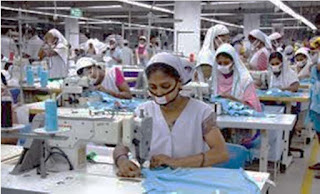The Garment Industry in Bangladesh: Engine of Economic Growth
In the tapestry of Bangladesh's economy, the garment industry stands out as a vibrant thread, weaving together prosperity, employment, and opportunity. From humble beginnings to becoming a global powerhouse, its impact on the nation's economic growth is undeniable, shaping not only the industrial landscape but also the lives of millions.
**A Journey of Growth**
The story of Bangladesh's garment industry is one of resilience, innovation, and transformation. Emerging in the late 1970s, it quickly gained momentum, capitalizing on the nation's abundant labor force and strategic location. Today, it ranks as the world's second-largest apparel exporter, a remarkable feat fueled by factors such as competitive labor costs, preferential trade agreements, and a conducive business environment.
The industry's growth trajectory has been nothing short of remarkable. With an annual export value exceeding $30 billion, it contributes significantly to Bangladesh's gross domestic product (GDP), accounting for nearly 80% of the country's total exports. This economic juggernaut has propelled Bangladesh onto the global stage, earning it recognition as a key player in the international apparel market.
**Driving Employment and Empowerment**
At the heart of the garment industry's success lies its ability to generate employment on a massive scale. With over 4 million workers, predominantly women from rural areas, employed in garment factories across the country, it serves as a lifeline for millions of households. These jobs provide not only income but also empowerment, enabling women to break free from the shackles of poverty and pursue a better future for themselves and their families.
Moreover, the garment industry has catalyzed socio-economic development by fostering skills development, entrepreneurship, and infrastructure growth. It has created a ripple effect, stimulating demand for ancillary services such as transportation, logistics, and utilities, and driving investment in related industries. Small and medium enterprises (SMEs) have flourished in its wake, further diversifying Bangladesh's economy and fostering inclusive growth.
**Challenges and Opportunities**
Despite its remarkable achievements, the garment industry in Bangladesh faces a myriad of challenges that threaten its sustainability and growth. Labor rights violations, workplace safety concerns, and environmental degradation have cast a shadow over the sector, raising ethical questions and prompting calls for reform.
The Rana Plaza tragedy in 2013, where a poorly constructed garment factory collapsed, claiming thousands of lives, served as a stark reminder of the human cost of unchecked industrialization. In its aftermath, significant efforts have been made to improve workplace safety, strengthen labor laws, and enhance regulatory oversight. Initiatives such as the Accord on Fire and Building Safety in Bangladesh and the Alliance for Bangladesh Worker Safety have played a pivotal role in driving progress in these areas.
Furthermore, the garment industry's heavy reliance on low-cost labor and its environmental footprint pose significant sustainability challenges. Efforts to address these issues through technological innovation, sustainable practices, and responsible sourcing are underway but require concerted action from all stakeholders.
**Charting a Sustainable Future**
As Bangladesh charts its course towards sustainable development, the garment industry remains a linchpin of its economic strategy. However, unlocking its full potential requires a holistic approach that balances economic growth with social progress and environmental stewardship.
Investments in skills development, technology adoption, and value addition are essential to enhancing the industry's competitiveness and resilience in the global market. Equally important is the need to uphold labor rights, ensure workplace safety, and promote sustainable practices across the supply chain.
By harnessing the transformative power of the garment industry and embracing a vision of inclusive, sustainable growth, Bangladesh can pave the way for a brighter future for its people and cement its status as a beacon of economic progress in the global arena.

Comments
Post a Comment